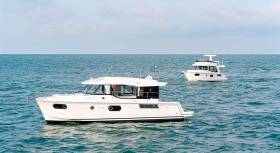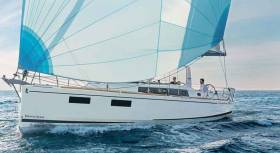Displaying items by tag: Swift Trawler
Beneteau’s New Swift Trawler 41 Is An Exciting Prospect
Irish Beneteau dealers BJ Marine are looking forward to the arrival of the new Swift Trawler 41.
The Swift Trawler range has been one of the most successful in Irish waters, says BJ Marine’s James Kirwan, especially the original 42 and the 44.
This latest and final addition to the successful range of long-distance cruisers is 13.3 metres long with a 4.2 metre beam, combining seaworthiness with living space and comfort, and inherits the contemporary feel — and optimised hull design — of last year’s Swift Trawler 47.
Famed for stability and economy, the Swift Trawler has been particularly popular for sailors who are looking to take a step away from sailing and move to power.
What is incredibly exciting about the new 41 is the amount of accommodation that they have managed to pack in to the boat — up to seven passengers — as well as the option of the Sedan for our climate at home when the flybridge can sometimes be under-utilised.
James will be aboard the boat in two weeks for trials and will come back with a full report that will be of particular interest to existing Swift Trawler owners and those looking to crossover from sailing, as the Swift Trawler range always provides the answer to their needs.
Yacht broker Ancasta has announced its line up for Poole Harbour Boat Show 2017, which takes place from 19th to 21st May 2017. As one of the UK’s largest Beneteau power and sail dealerships, it will be presenting the Beneteau Oceanis 38.1 and 41.1 as well as the popular Swift Trawler 30 and 44 motor yachts.
Both the Beneteau Oceanis 38.1 and 41.1, which debuted in the UK in Autumn 2016, are designed with Finot-Conq hulls and Nauta interiors. The Oceanis range continues to offer a variety of different layouts, from number of cabins and bathrooms to a choice of galley layout, enabling clients to customise their boats to suit their style of sailing.
The Swift Trawler models at the show combine classic style and design with modern technology and boast incredible sea-keeping qualities for long distance or coastal cruising. Uninterrupted windows allow light to flood into the saloon. The Swift Trawler 30 is the newest in the latest generation of the range.
Poole Harbour Boat Show is open Friday 19th, Saturday 20th and Sunday 21st May from 10am to 5.30pm.

























































